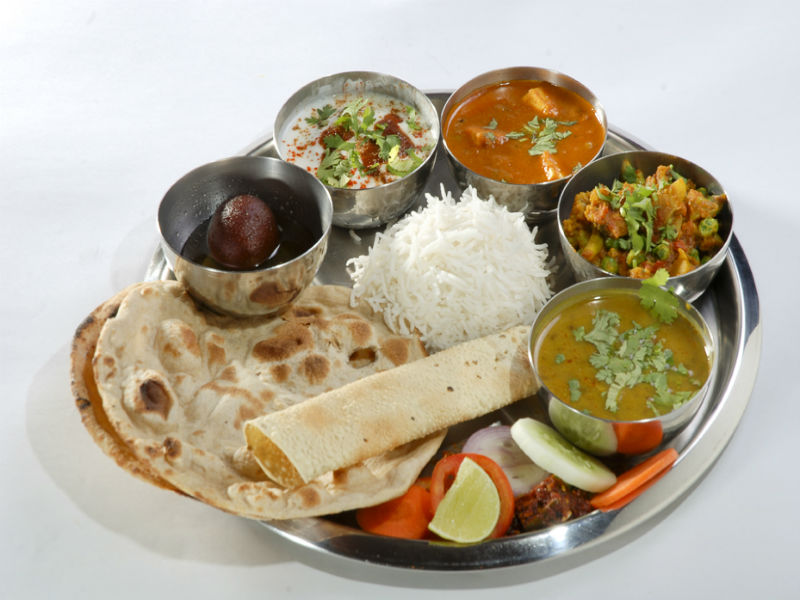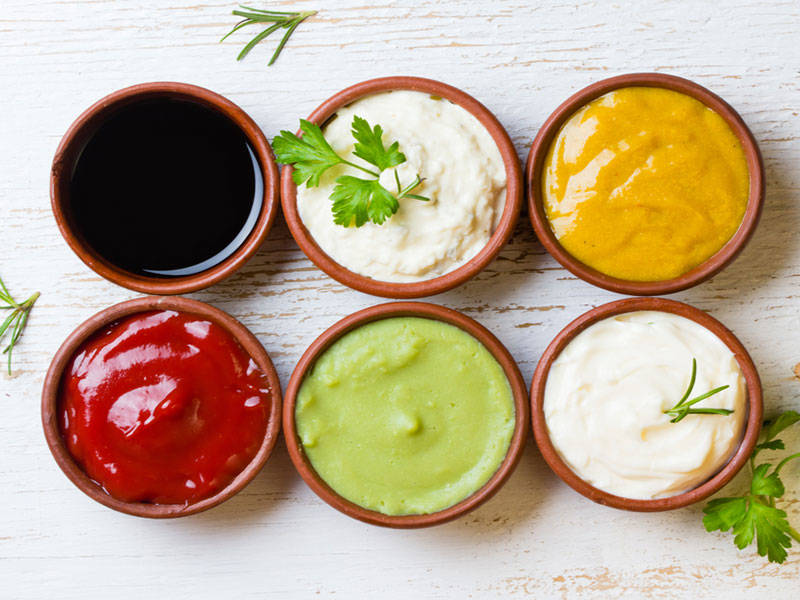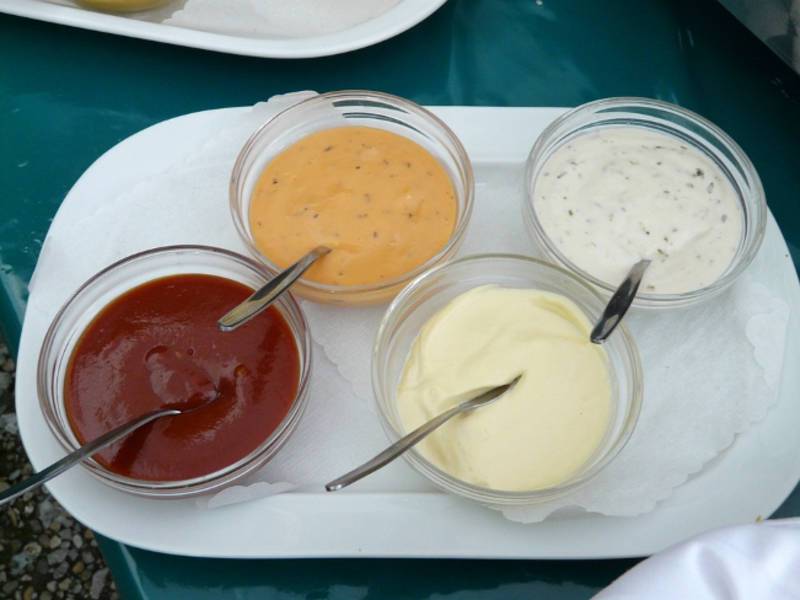A Delicious Journey through the Different Types of Sweet and Sour Sauce
Introduction:
Sweet and sour sauce is a popular condiment that has gained worldwide recognition for its unique blend of flavors. Whether used as a dipping sauce, marinade, or glaze, this versatile sauce adds a tangy and delectable twist to various dishes. In this article, we will take a tantalizing journey through the different types of sweet and sour sauce, exploring their ingredients, regional variations, and culinary applications.
1. Chinese-style Sweet and Sour Sauce:
Originating from China, this classic sweet and sour sauce is perhaps the most well-known variation. With a perfect balance between sweet and tangy flavors, it pairs particularly well with meats, vegetables, and stir-fry dishes. Typically made with ingredients like vinegar, sugar, soy sauce, ketchup, and pineapple juice, this sauce is thickened with cornstarch to achieve a glossy and syrupy consistency. It offers the perfect harmony of flavors, enhanced by the addition of pineapple chunks or crushed pineapple for an extra burst of tropical sweetness.
2. Thai-style Sweet and Sour Sauce:
Thai sweet and sour sauce, also known as “Priew Wan,” showcases the vibrant and aromatic flavors that are synonymous with Thai cuisine. It offers a delightful combination of sweet, sour, and spicy elements, creating a tantalizing flavor profile. Thai sweet and sour sauce typically includes ingredients such as tamarind paste, fish sauce, palm sugar, lime juice, and Thai chili peppers. This sauce is commonly used in dishes like Pad Priew Wan (sweet and sour stir-fry with vegetables and protein), and it is a perfect accompaniment to Thai spring rolls and fried foods.
3. Malaysian-style Sweet and Sour Sauce:

Malaysian sweet and sour sauce, known as “Assam Pedas,” incorporates a unique blend of flavors, combining the influences of Malay, Chinese, and Indian cuisine. This sauce is characterized by its strong tanginess, which is derived from tamarind and the use of other aromatic spices like ginger, garlic, and shallots. It often includes ingredients such as belacan (shrimp paste), palm sugar, and chili for an added kick. Malaysian sweet and sour sauce is commonly used in fish-based dishes and is a staple in many traditional Malay cooking recipes.
4. Japanese-style Sweet and Sour Sauce:
Teriyaki sauce, with its sweet and savory notes, can be seen as a variation of sweet and sour sauce in Japanese cuisine. While not as tangy as other types, it provides a delicious balance of flavors. Traditionally made with soy sauce, mirin (sweet rice wine), sake, and sugar, this sauce is reduced to a thick and caramelized consistency. Teriyaki sauce is a popular choice for grilling or glazing meats, such as chicken, beef, or salmon. It also serves as an excellent dipping sauce for tempura and other fried dishes.
5. Korean-style Sweet and Sour Sauce:
Korean sweet and sour sauce, known as “Tangsuyuk sauce,” offers a delightful blend of sweet and tangy flavors. It is often used to accompany Korean-style sweet and sour pork, which features crispy deep-fried pork pieces covered in the flavorful sauce. This Korean variation typically includes ingredients such as vinegar, sugar, soy sauce, ketchup, and fruit juice (often pineapple or apple). The sauce can be thickened with cornstarch to achieve a glossy texture. It is also a popular choice for dipping dumplings and other snack foods.
Conclusion:
Sweet and sour sauce is a versatile condiment that adds a burst of flavor to a variety of dishes from different culinary traditions. From its classic Chinese-style to Thai, Malaysian, Japanese, and Korean variations, each type offers a unique blend of sweetness, tanginess, and other complementary flavors. Whether used as a marinade, glaze, or dipping sauce, the different types of sweet and sour sauce provide an exciting culinary journey and can be adapted to suit various tastes and preferences. So, go ahead and explore the diverse world of sweet and sour sauces to enhance your culinary endeavors.I. The Growing Demand for Sweet and Sour Sauce in the Food Industry
The culinary world is constantly evolving, and consumer preferences play a significant role in shaping food trends. Sweet and sour sauce has seen a surge in popularity, not only in traditional Asian cuisine but also in fusion dishes and fast-food chains. The demand for this versatile condiment has increased as more people become aware of its mouth-watering flavor profile and its ability to elevate various dishes. As a result, businesses in the food industry have recognized the opportunity to incorporate sweet and sour sauce into their menus, expanding its reach to a wider consumer base.
II. Sweet and Sour Sauce as a Flavorful Dipping Sauce

One of the key uses of sweet and sour sauce is as a dipping sauce. Its tangy and slightly sweet flavors make it an excellent pairing for a wide range of appetizers, snacks, and finger foods. This has led to an increase in demand for the sauce as a condiment in restaurants, food trucks, and even packaged products. From spring rolls and dumplings to chicken nuggets and french fries, sweet and sour sauce adds a delightful burst of flavor that enhances the overall dining experience.
III. Incorporating Sweet and Sour Sauce into Stir-Fry and Noodle Dishes
Sweet and sour sauce is a staple ingredient in many stir-fry and noodle dishes. Its ability to balance out the flavors of meat, vegetables, and noodles makes it a versatile addition to these types of dishes. Stir-fry and noodle restaurants, as well as food delivery services, recognize the value of incorporating sweet and sour sauce into their offerings, catering to customers who crave the tangy and sweet combination in their meals.
IV. Sweet and Sour Sauce as a Glaze for Grilled Meats and Seafood
The caramelized properties of sweet and sour sauce make it an ideal glaze for grilled meats and seafood. The combination of sweet and tangy flavors adds depth and richness to grilled dishes, creating a mouth-watering experience for diners. Restaurants specializing in barbecue, grilled meats, and seafood have embraced the use of sweet and sour sauce as a glaze, elevating their dishes and attracting customers who seek unique and flavorful options.
V. The Role of Sweet and Sour Sauce in Fusion Cuisine
In recent years, fusion cuisine has gained significant popularity, offering a mix of various culinary traditions and flavors. Sweet and sour sauce plays a crucial role in fusion dishes, adding a touch of familiarity while also creating a new twist. The sauce’s versatility allows chefs to experiment and create innovative combinations that blend different cultural influences. This has opened up opportunities for fusion-focused restaurants, food trucks, and catering services to incorporate sweet and sour sauce into their menus and captivate a wide audience.
VI. Packaging Sweet and Sour Sauce for Retail Consumers
Recognizing the growing demand among consumers for sweet and sour sauce, businesses have capitalized on the opportunity to package and sell it as a retail product. Bottled sweet and sour sauce enables consumers to recreate their favorite dishes at home without the need for intensive preparation. This has led to collaborations between sauce manufacturers and supermarkets, ensuring that customers can access high-quality sweet and sour sauce conveniently.

VII. Sweet and Sour Sauce as an Ingredient in Ready-to-Eat Meals
The convenience of ready-to-eat meals has reshaped the food industry. Sweet and sour sauce plays a significant role in enhancing the flavors of pre-packaged meals, making them more appealing to busy individuals who are looking for quick and tasty options. As a result, manufacturers of ready-to-eat meals have incorporated sweet and sour sauce into their product offerings, catering to consumers’ desire for bold and flavorsome choices.
VIII. Health Considerations and Sweet and Sour Sauce Alternatives
While sweet and sour sauce is undeniably delicious, its high sugar content may raise concerns for health-conscious consumers. As businesses in the food industry strive to cater to diverse dietary preferences, alternatives to traditional sweet and sour sauce have emerged. Some companies have developed low-sugar or sugar-free versions of the sauce, using natural sweeteners or sugar substitutes. This allows customers to enjoy the tangy flavors of sweet and sour sauce while being mindful of their sugar intake.
IX. The Benefit of Customizable Sweet and Sour Sauce Offerings
To meet the demands of discerning customers, businesses in the food industry have started offering customizable sweet and sour sauce options. This allows consumers to adjust the sweetness, tanginess, and spiciness of the sauce to suit their personal preferences. Customization is particularly valuable in fast-casual restaurants, food kiosks, and food delivery services, where customers can have a tailored dining experience.
X. Sweet and Sour Sauce as a Branding Opportunity
For businesses that specialize in the production or sale of sweet and sour sauce, branding plays a crucial role in attracting customers. Brands that focus on high-quality ingredients, authentic recipes, or unique flavor profiles can differentiate themselves in the market and build a loyal customer base. Effective branding strategies, such as eye-catching packaging, engaging marketing campaigns, and collaborations with influencers or chefs, contribute to the success and recognition of sweet and sour sauce brands.
Conclusion:

As the demand for flavorful and unique condiments continues to grow, sweet and sour sauce has proven to be a versatile and sought-after choice in the food industry. Whether it’s used as a dipping sauce, glaze, or marinade, this tangy and sweet condiment adds a delightful twist to a wide range of dishes. Businesses in the food industry have recognized the potential of incorporating sweet and sour sauce into their menus, offering customers an array of options to satisfy their cravings. With its possibilities for customization, fusion potential, and adaptability to different cuisines, sweet and sour sauce remains a staple condiment that captivates taste buds and keeps consumers coming back for more.









